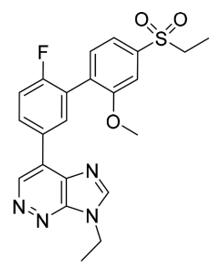Ion channels, critical membrane proteins involved in various physiological processes, are particularly challenging targets for drug discovery due to their complex structure and function. DNA-encoded libraries (DELs) technology offers a unique approach to screening vast libraries of small molecules, each tagged with a DNA barcode, against ion channels to identify potent modulators.
Screening Strategies for Ion Channels Using DELs
DELs technology offers a versatile approach to rapidly and efficiently screen vast libraries of small molecules against ion channels, enabling the identification of potent modulators. Here are the key screening strategies employed for ion channels using DELs:
Direct Binding Assays
Direct binding assays involve incubating DELs with purified ion channels or channel-containing membranes. This method identifies compounds that bind directly to the ion channels, providing initial hits that can be further analyzed for functional activity. For example, DELs can be incubated with purified sodium channels to discover potential inhibitors, which can then be validated through secondary assays.
Functional Assays
Functional assays are crucial for determining whether identified compounds modulate ion channel activity in a biologically relevant manner. These assays typically involve expressing ion channels in cell lines and measuring changes in ion flow or membrane potential upon treatment with DELs-derived compounds. High-throughput electrophysiology platforms, such as automated patch-clamp systems, are often used to facilitate this process.
Competitive Binding Assays
Competitive binding assays utilize known ligands to identify compounds that can displace these ligands from their binding sites on ion channels. By screening DELs in the presence of a fluorescent or radiolabeled ligand, researchers can identify molecules that competitively bind to the ion channel, indicating potential modulatory activity.
Examples of DELs Screen for Ion Channels
Below are examples of ion channels identified through DELs selection:
Voltage-Gated Sodium Channels
DELs have been successfully employed to identify modulators of voltage-gated sodium channels, which are pivotal in pain and epilepsy treatment. For instance, a study used DELs comprising billions of compounds to screen for inhibitors of the Nav1.7 sodium channel, a key player in pain perception. The screening process identified several potent inhibitors, one of which demonstrated significant analgesic effects in animal models [1].
 Fig. 1 Structures of compounds isolated from Ancistrocladus tectorius [1].
Fig. 1 Structures of compounds isolated from Ancistrocladus tectorius [1].
GABA_A Receptor Modulator
GABA_A receptors, ligand-gated ion channels involved in inhibitory neurotransmission, represent promising targets for anxiety and epilepsy therapeutics. Through DELs screening, researchers identified novel positive allosteric modulators (PAMs) capable of enhancing GABA-induced currents through the GABA_A receptor. These PAMs exhibit potential as anxiolytics and anticonvulsants, offering a new class of pharmacological agents for the treatment of neurological disorders [2].
 Fig. 2 Structures of GABA_A Receptor Modulator [2].
Fig. 2 Structures of GABA_A Receptor Modulator [2].
α4β2 Nicotinic Acetylcholine Receptor Agonists
Nicotinic acetylcholine receptors (nAChRs), particularly the α4β2 subtype, are implicated in cognitive function and nicotine addiction. Leveraging DELs technology, researchers conducted a comprehensive screening campaign to identify selective α4β2 nAChR agonists. This effort led to the discovery of novel compounds capable of selectively activating the α4β2 receptor subtype [3].
 Fig. 3 Structures of α4β2* neuronal nicotinic acetylcholine receptors (nAChRs) positive allosteric modulators (PAMs), desformylflustrabromine (dFBr) and 3-(2-chlorophenyl)-5-(5-methyl-1-(piperidin-4-yl)-1H-pyrazol-4-yl)isoxazole (CMPI). [3].
Fig. 3 Structures of α4β2* neuronal nicotinic acetylcholine receptors (nAChRs) positive allosteric modulators (PAMs), desformylflustrabromine (dFBr) and 3-(2-chlorophenyl)-5-(5-methyl-1-(piperidin-4-yl)-1H-pyrazol-4-yl)isoxazole (CMPI). [3].
Advantages of DELs for Ion Channel Targeting

- Unparalleled Diversity: DELs offer an unprecedented diversity of compounds, often comprising billions of unique molecules. This extensive diversity increases the likelihood of identifying rare, high-affinity binders to ion channels, which might be missed using traditional screening methods.
- High Throughput and Efficiency: The high-throughput nature of DELs technology allows for the rapid screening of vast libraries against ion channels. This efficiency significantly accelerates the drug discovery process, reducing the time and cost associated with identifying lead compounds.
- Cost-Effectiveness: DELs are cost-effective, as they obviate the need for extensive compound synthesis and handling. The DNA barcoding system allows for the facile identification and amplification of active compounds, streamlining the hit-to-lead process.
- Facilitating Structure-Activity Relationship (SAR) Analysis: The DNA tags on DELs compounds enable straightforward deconvolution and sequencing, facilitating the rapid elucidation of structure-activity relationships (SAR). This capability is crucial for optimizing lead compounds, enhancing their potency, selectivity, and pharmacokinetic properties.
The application of DNA-encoded libraries (DELs) in targeting ion channels represents a significant advancement in drug discovery. By leveraging the vast diversity, high throughput, and cost-effectiveness of DELs, researchers can efficiently identify and optimize novel modulators of these complex and vital proteins. Contact us today to learn more about our services and discover how we can empower your journey towards innovation and success.
References
- Wang Qiao-qiao, Wang Long, Zhang Wen-bo, et al. Naphthylisoquinoline alkaloids, a new structural template inhibitor of Nav1.7 sodium channel. Acta Pharmacologica Sinica. May 2023, 44(9).
- Owen RM, Blakemore D, Cao L, et al. Design and Identification of a Novel, Functionally Subtype Selective GABAA Positive Allosteric Modulator (PF-06372865). J Med Chem. 2019 Jun 27;62(12):5773-5796.
- Deba F, Ramos K, Vannoy M, et al. Examining the Effects of (α4)3(β2)2 Nicotinic Acetylcholine Receptor-Selective Positive Allosteric Modulator on Acute Thermal Nociception in Rats. Molecules. 2020; 25(12):2923.
